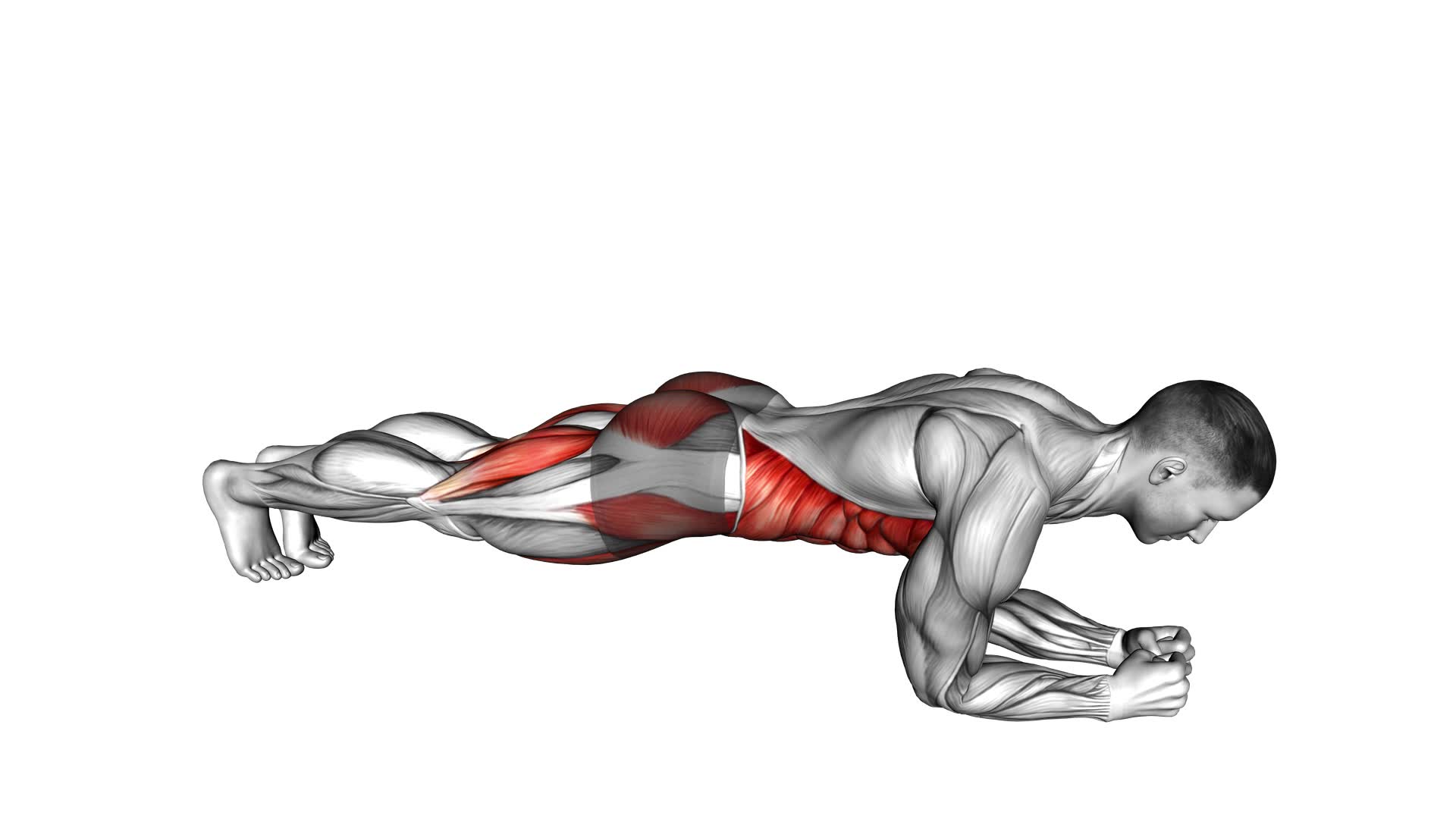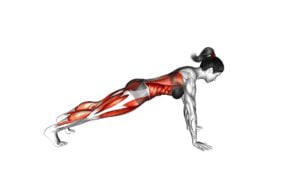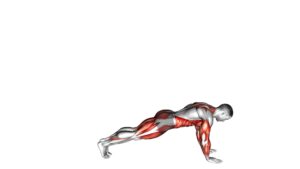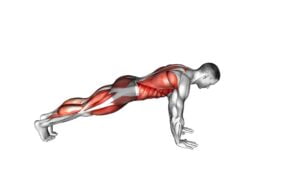Leg Lift to Chest Front Plank – Video Exercise Guide & Tips

Looking to strengthen your core and improve your overall fitness? Check out this video exercise guide and tips on the leg lift to chest front plank.
Watch This Exercise Video
Engage multiple muscles while avoiding common mistakes. Learn proper form and technique, as well as modifications and progressions for all fitness levels.
Maximize your workout effectiveness with these expert tips. Get ready to feel the burn and achieve your fitness goals with this challenging yet rewarding exercise!
Key Takeaways
- Maintain a straight line from head to heels during the leg lift to chest front plank exercise.
- Engage core muscles effectively and focus on core engagement and steady body movements.
- Target abdominal muscles, hip flexors, and lower back for optimal muscle activation and growth.
- Gradually increase leg lift difficulty and use proper breathing techniques for stability and control.
Proper Form and Technique
Maintain a straight line from your head to your heels while performing the Leg Lift to Chest Front Plank exercise. Proper form and technique are essential for maximizing the benefits of this exercise and preventing injury. By maintaining a straight line, you engage your core muscles more effectively, enhancing the overall effectiveness of the exercise. This exercise targets your abdominal muscles, hip flexors, and lower back, helping to improve your core strength and stability.
The benefits of proper form are numerous. First and foremost, it ensures that you're targeting the intended muscles, allowing for optimal muscle activation and growth. It also helps to improve your posture and alignment, reducing the risk of injury and discomfort. Additionally, maintaining proper form throughout the exercise increases the intensity and challenge, leading to greater results.
Technique is equally important when performing the Leg Lift to Chest Front Plank. Focus on keeping your core engaged and your body steady. Avoid any unnecessary movements or arching of the back. Control your leg lift and chest tuck, moving slowly and deliberately. Remember to breathe throughout the exercise, exhaling as you lift your legs and chest and inhaling as you lower them.
Muscles Engaged
Engaging your core muscles is crucial when performing the Leg Lift to Chest Front Plank exercise. This challenging exercise primarily targets your abdominal muscles, specifically the rectus abdominis, transverse abdominis, and obliques. These muscles play a vital role in stabilizing your torso and supporting your spine.
In addition to the core muscles, the Leg Lift to Chest Front Plank also engages several other muscle groups. The glutes, or buttocks muscles, are activated to help maintain a stable position throughout the exercise. Your shoulders, chest, and upper back muscles are also engaged as they work to support your body weight and maintain proper alignment.
By engaging multiple muscle groups, the Leg Lift to Chest Front Plank offers a wide range of benefits. It helps strengthen your core, improve stability and balance, and enhance overall body control. Additionally, this exercise can contribute to better posture and a toned midsection.
To add variation to the Leg Lift to Chest Front Plank, you can try lifting one leg at a time or adding a knee tuck to engage your hip flexors. You can also incorporate a stability ball or sliders to increase the challenge and target different muscle groups.
Remember to maintain proper form throughout the exercise and listen to your body to avoid any strain or injury.
Modifications and Progressions
To progress the Leg Lift to Chest Front Plank exercise, you can incorporate variations that challenge different muscle groups and increase the difficulty level. For beginners, modifications can be made to make the exercise more manageable.
One modification is to start by performing the exercise with the knees on the ground instead of in a full plank position. This reduces the amount of weight being lifted and allows beginners to build strength gradually. Another modification is to perform the leg lift without the chest plank. This focuses on strengthening the hip flexors and core muscles without the added challenge of balancing on the arms.
For advanced progressions, you can increase the difficulty level by adding weights or resistance bands to the exercise. Holding a dumbbell or placing a resistance band around the ankles adds resistance, forcing the muscles to work harder. Another progression is to perform the exercise on an unstable surface, such as a BOSU ball or a stability disc. This challenges the core muscles even more as they've to work harder to stabilize the body.
By incorporating modifications for beginners and advanced progressions, you can continually challenge your muscles and progress in your fitness journey.
Now, let's move on to the next section and discuss common mistakes to avoid when performing the Leg Lift to Chest Front Plank exercise.
Common Mistakes to Avoid
To avoid common mistakes when performing the Leg Lift to Chest Front Plank exercise, focus on maintaining proper form and engaging the correct muscles throughout the movement. Here are some key tips to help you perform the exercise correctly and avoid potential errors:
- Maintain proper breathing techniques: Remember to breathe steadily and avoid holding your breath during the exercise. Inhale deeply through your nose and exhale slowly through your mouth to help maintain a steady rhythm and prevent unnecessary tension in your muscles.
- Focus on stability and balance improvements: One common mistake is allowing your hips to sag or rotate during the exercise. To avoid this, engage your core muscles and keep your body in a straight line from your head to your heels. This will help improve your stability and balance throughout the movement.
- Avoid rushing the exercise: Take your time and perform the Leg Lift to Chest Front Plank exercise with control. Avoid swinging your legs or using momentum to lift them towards your chest. Instead, focus on using your abdominal muscles to lift your legs and maintain a slow and controlled movement.
Tips for Maximum Effectiveness
To maximize the effectiveness of the Leg Lift to Chest Front Plank exercise, focus on maintaining proper form and engaging the correct muscles. By following these tips, you can ensure that you're getting the most out of this exercise.
Firstly, it's important to be aware of common modifications that can be made to tailor the exercise to your fitness level. If you find it difficult to lift your legs all the way to your chest, you can start by lifting them only halfway and gradually work your way up. Additionally, if you struggle with the front plank position, you can modify it by dropping your knees to the ground.
Breathing techniques are also crucial for maximum effectiveness. Remember to inhale deeply through your nose before starting the exercise and exhale fully through your mouth as you lift your legs and engage your core. This will help you maintain stability and control throughout the movement.
Lastly, don't be afraid to challenge yourself by incorporating variations and progressing your intensity levels. You can try lifting heavier weights or increasing the duration of the exercise. This will help to continuously challenge your muscles and ensure continued progress.
Frequently Asked Questions
How Many Repetitions Should I Do for the Leg Lift to Chest Front Plank Exercise?
To determine how many repetitions you should do for the leg lift to chest front plank exercise, it's important to consider your fitness level and goals. Start with a number that challenges you but allows for proper form. Gradually increase the repetitions as you get stronger.
Adding the leg lift to chest movement can provide additional core and hip flexor activation, helping to improve overall stability and strength. It also offers alternative modifications to target different muscle groups.
Is It Safe to Perform This Exercise if I Have Lower Back Pain?
Yes, it's safe to perform the leg lift to chest front plank exercise if you have lower back pain. However, it's important to listen to your body and make modifications as needed.
If the exercise causes discomfort, you can try reducing the range of motion or performing alternative exercises that relieve lower back pain, such as bird dogs or glute bridges.
Always consult with a healthcare professional for personalized advice.
Can I Incorporate Weights or Resistance Bands to Make This Exercise More Challenging?
Yes, you can definitely incorporate weights or resistance bands to make this exercise more challenging. Adding weights, such as ankle weights or holding dumbbells, will increase the resistance and intensity of the leg lift to chest front plank.
Similarly, using resistance bands around your ankles or thighs can also provide an additional challenge. However, it's important to start with lighter weights or bands and gradually increase the resistance as you build strength and stability.
What Is the Recommended Rest Time Between Sets for This Exercise?
The recommended rest time between sets for this exercise depends on your fitness level and goals. Generally, a rest period of 30-60 seconds is sufficient to recover and maintain the intensity of the workout. However, beginners may require longer rest periods to allow for proper recovery.
It's important to listen to your body and adjust the rest time accordingly. Additionally, modifications for beginners can include performing the exercise on your knees or reducing the range of motion.
Can I Perform the Leg Lift to Chest Front Plank Exercise on a Stability Ball Instead of the Floor for Added Difficulty?
Yes, you can perform the leg lift to chest front plank exercise on a stability ball for added difficulty. By using a stability ball, you engage more muscles to maintain balance and stability.
This modification challenges your core, hip, and shoulder muscles even more, enhancing the overall effectiveness of the exercise. It also helps improve your coordination and stability.
Incorporating the stability ball into your workout routine can add variety and challenge to your exercises.
Conclusion
In conclusion, the leg lift to chest front plank is a challenging exercise that engages multiple muscles in the body. By maintaining proper form and technique, you can maximize the effectiveness of this exercise.
It's important to avoid common mistakes and follow modifications and progressions to prevent injuries and achieve desired results.
By incorporating this exercise into your fitness routine, you can strengthen your core and improve overall body stability.

Author
Years ago, the spark of my life’s passion ignited in my mind the moment I stepped into the local gym for the first time. The inaugural bead of perspiration, the initial endeavor, the very first surge of endorphins, and a sense of pride that washed over me post-workout marked the beginning of my deep-seated interest in strength sports, fitness, and sports nutrition. This very curiosity blossomed rapidly into a profound fascination, propelling me to earn a Master’s degree in Physical Education from the Academy of Physical Education in Krakow, followed by a Sports Manager diploma from the Jagiellonian University. My journey of growth led me to gain more specialized qualifications, such as being a certified personal trainer with a focus on sports dietetics, a lifeguard, and an instructor for wellness and corrective gymnastics. Theoretical knowledge paired seamlessly with practical experience, reinforcing my belief that the transformation of individuals under my guidance was also a reflection of my personal growth. This belief holds true even today. Each day, I strive to push the boundaries and explore new realms. These realms gently elevate me to greater heights. The unique combination of passion for my field and the continuous quest for growth fuels my drive to break new ground.







